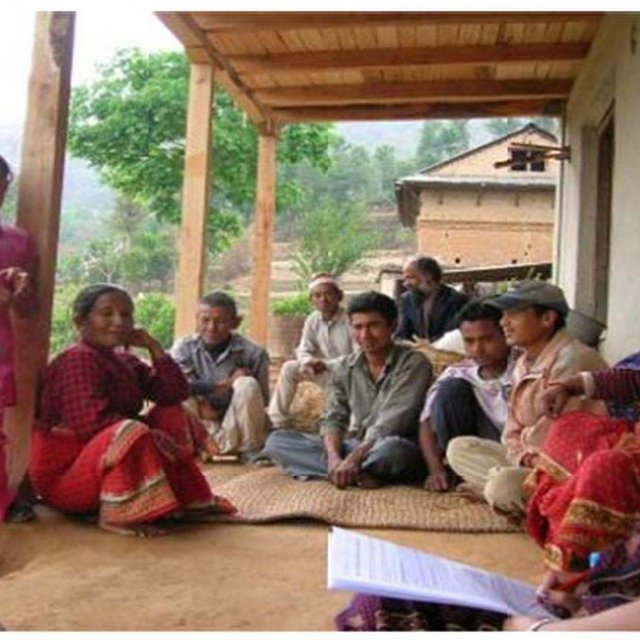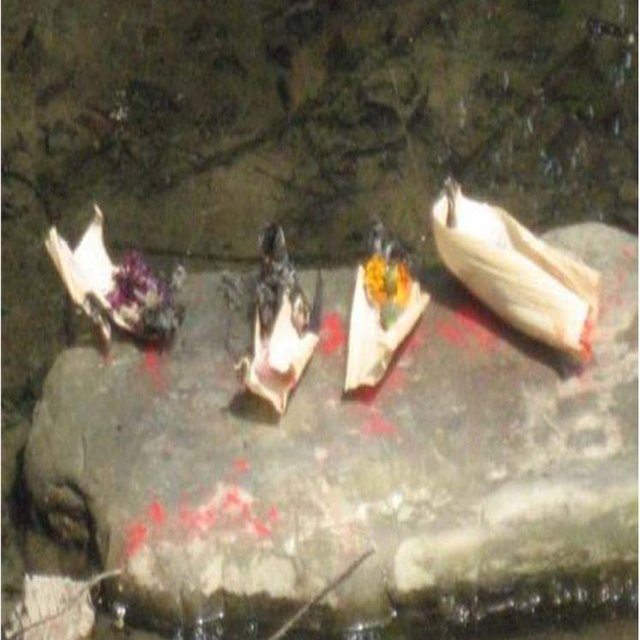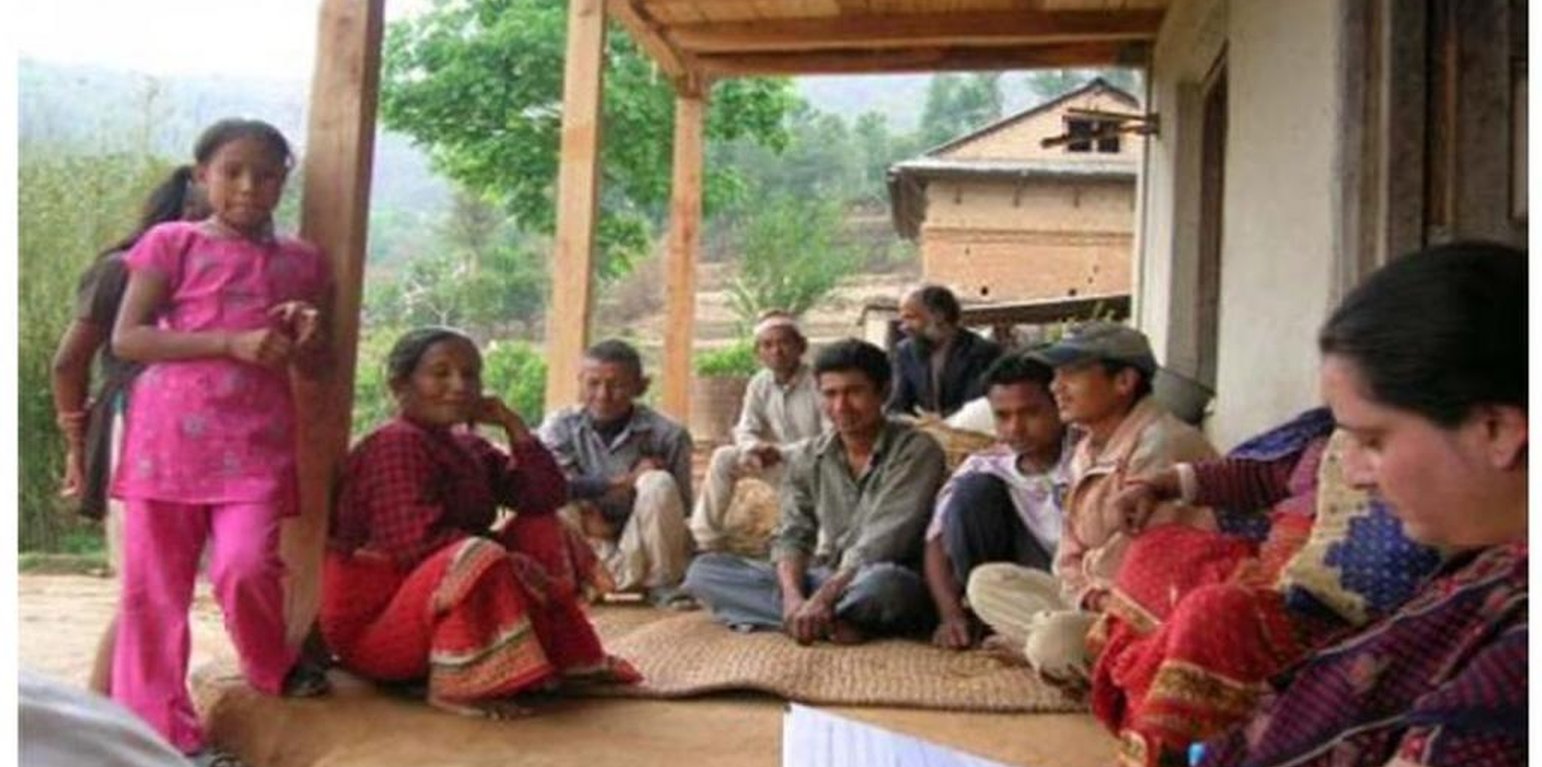Protected gullies – a traditional sustainable land management practice
(Nepal)
Kholse: eak paramparagat digo bhu-bewasthapan bidhi (Main Contributro: Sabita Khanal, Kathmandu University)
Description
Protected gullying is a sustainable land management practice initiated and maintained by the traditional community approach; it is based on indigenous knowledge and uses only locally available materials.
Aims / objectives: Sustainable land management aims to prevent soil erosion and to increase productivity; it can take on different forms depending on the exigencies of the terrain.
Methods: In Kabhrepalanchok District, where the slope of the land is not too steep, farmers use gullies controlled using indigenous techniques to protect fertile agricultural land, to minimize erosion, and to help prevent landslides near villages.
For more than two hundred years, land users in jagidol (jagi=rice, dol=gully) villages practiced gully control and they have developed innovative methods for deployment and maintenance of gullies. Periodically, the whole community is involved in discussions for planning and implementation of new measures, but for the most part only routine repairs are needed and the individual farmers whose properties border the gullies shoulder the main responsibility for maintaining them. When severe flooding events cause many gullies to collapse, materials are collected locally and the whole village cooperates in the rebuilding. Both men and women are involved; men usually help with the heavy digging when new gullies are established or during crises when many gullies collapse at once and women are involved in the day-to-day maintenance of the gullies. Communities in villages higher up in the hills have used this approach for a long time; their gullies are more mature and well-entrenched and are reinforced by mature bio-engineering measures. Gullies in villages situated lower down the slope are usually more recently established and typically still require regular maintenance.
The jagidol village community, the Newari guthi (religious group) in the area, and the Hindus who worship the snake god Nagdevata and Shivadevata along the stream banks are particularly conscientious in maintaining the gullies that border the shrine(s). In this example, maintenance of the gullies is a collective effort through social networks.
Location
![]()
Location: Sharada Batase VDC, Kabhrepalanchok , Nepal
Geo-reference of selected sites
Initiation date: n.a.
Year of termination: n.a.
Type of Approach
-
traditional/ indigenous
-
recent local initiative/ innovative
-
project/ programme based

Members of the community gather for a focus group discussion on the approaches for gully conservation. (Sabita Aryal Khanna)

Community worship for Nagadevta along the gulley, devotees take extra care and consciousness for the protection of the gully (Sabita Aryal Khanna)
Approach aims and enabling environment
Main aims / objectives of the approach
The Approach focused mainly on SLM with other activities (Religious, cultural and ecological significance)
To ensure the maintenance of the system of gullies that acts to help prevent soil erosion and protect against flooding. During the rainy season the gullies channel water away, and during the dry season they can be modified to collect water for irrigation. Maintenance is especially important during the rainy season because when water is not channelled many terraces can collapse simultaneously and the ensuing landslide can threaten the stability of the entire village.
The SLM Approach addressed the following problems: This approach suffers from a lack of institutional infrastructure. Since the group that maintains the gullies is not registered as a conservation team or an organization, it is not entitled to technical or financial support of any kind from government or non-governmental organizations. The research conducted by the community is not documented anywhere, it is passed on by word of mouth. A shortage of labour (or labour saving devices) is a persistent constraint in the maintenance of the gullies.
Conditions enabling the implementation of the Technology/ ies applied under the Approach
-
Legal framework (land tenure, land and water use rights): The existing land ownership, land use rights / water rights moderately helped the approach implementation: It is generally accepted that since the farmer whose land borders the gullies gets the most benefit by having access to the water, that it is his responsibility to maintain and repair them. In times of crises, when gullies collapse beyond his individual ability to repair them, he can ask the community for help.
Conditions hindering the implementation of the Technology/ ies applied under the Approach
-
Availability/ access to financial resources and services: For the labour needed to perform the maintenance. During the busy parts of the farming year there is little or no labour available for land management projects.
Treatment through the SLM Approach: Sustainable land management projects are scheduled for the dry season when farmers have fewer farming-related obligations.
-
Legal framework (land tenure, land and water use rights): The landowner is mostly responsible
Treatment through the SLM Approach: The landowner is encouraged by others in the community to maintain the gullies that border of his/her land
-
Knowledge about SLM, access to technical support: Farmers are not fully aware of the best gullying practices
Treatment through the SLM Approach: New methods and the use of new materials can be learned from other projects implemented in nearby areas
-
Other: Financial: To purchase tools and equipment needed for maintenance activities
Treatment through the SLM Approach: Local materials are used; the community makes in-kind and (occasionally) in-cash donations
Participation and roles of stakeholders involved
Stakeholders involved in the Approach and their roles
| What stakeholders / implementing bodies were involved in the Approach? |
Specify stakeholders |
Describe roles of stakeholders |
| local land users/ local communities |
Generally the farmer owning the land that borders on the gullies maintains them. |
Usually the gullies are dug by young men. Men are also involved when gullies collapse and heavy digging is needed. Women conduct routine maintenance throughout the year.
|
Lead agency
The elders in the community are the repositories of traditional knowledge and best practices on gullying. The community discusses with them and together they decide on a plan of action that best suits the existing conditions. The solution is usually implemented by the men during the dry season and the women maintain the gullies during the rainy season.
Involvement of local land users/ local communities in the different phases of the Approach
none
passive
external support
interactive
self-mobilization
initiation/ motivation
The community as a whole decides when it needs to initiate sustainable land management in order to prevent erosion, to increase the amount of available farmland, and to protect the village from landslides.
planning
The community plans to dig gullies during the dry season; during the monsoon they plant grasses whose roots help to anchor the structures.
implementation
The land users implement protective measures during the times when they are not actively farming; they use all local materials
monitoring/ evaluation
Gullies are monitored routinely as part of normal farming activities; the gullies are maintained and repaired as needed.
Decision-making on the selection of SLM Technology
Decisions were taken by
-
land users alone (self-initiative)
-
mainly land users, supported by SLM specialists
-
all relevant actors, as part of a participatory approach
-
mainly SLM specialists, following consultation with land users
-
SLM specialists alone
-
politicians/ leaders
Decisions were made based on
-
evaluation of well-documented SLM knowledge (evidence-based decision-making)
-
research findings
-
personal experience and opinions (undocumented)
Technical support, capacity building, and knowledge management
The following activities or services have been part of the approach
-
Capacity building/ training
-
Advisory service
-
Institution strengthening (organizational development)
-
Monitoring and evaluation
-
Research
Monitoring and evaluation
bio-physical aspects were regular monitored by land users through measurements; indicators: Gullies are regularly monitored by the land users but there is no formal reporting; the community observes the evolution of the approach
socio-cultural aspects were regular monitored by land users through observations; indicators: When there are temples or shrines near the gullies, these are also places of worship for Nagadevta (the snake god) and Shivadevata. The villagers make a special effort to maintain the gullies.
Continuity of the approach aspects were regular monitored by land users through observations; indicators: The community has for generations used gullying as a practice for sustainable land management.
There were few changes in the Approach as a result of monitoring and evaluation: The practice has not changed significantly for generations; however, the use of new materials and techniques can be observed in communities farther downhill where the practice is a more recent innovation.
Financing and external material support
Annual budget in USD for the SLM component
-
< 2,000
-
2,000-10,000
-
10,000-100,000
-
100,000-1,000,000
-
> 1,000,000
Precise annual budget: n.a.
Approach costs were met by the following donors: local community / land user(s): 100.0%
The following services or incentives have been provided to land users
-
Financial/ material support provided to land users
-
Subsidies for specific inputs
-
Credit
-
Other incentives or instruments
Impact analysis and concluding statements
Impacts of the Approach
No
Yes, little
Yes, moderately
Yes, greatly
Did the Approach help land users to implement and maintain SLM Technologies?
Gullying helps to reduce the incidence of erosion, landslides, and floods as a result of which the dwellings in the village are more stable and everyone enjoys a greater sense of security.
Did the Approach empower socially and economically disadvantaged groups?
Did other land users / projects adopt the Approach?
There are a few incidences where farmers from neighbouring valleys have observed the gullying and have implemented similar sustainable land management measures in their own villages.
Main motivation of land users to implement SLM
-
increased production
-
increased profit(ability), improved cost-benefit-ratio
-
reduced land degradation
-
reduced risk of disasters
-
reduced workload
-
payments/ subsidies
-
rules and regulations (fines)/ enforcement
-
prestige, social pressure/ social cohesion
-
affiliation to movement/ project/ group/ networks
-
environmental consciousness
-
customs and beliefs, morals
-
enhanced SLM knowledge and skills
-
aesthetic improvement
-
conflict mitigation
-
Risk Minimization
Sustainability of Approach activities
Can the land users sustain what hat been implemented through the Approach (without external support)?
Conclusions and lessons learnt
Strengths: land user's view
Strengths: compiler’s or other key resource person’s view
-
The community works together for the benefit of all. (How to sustain/ enhance this strength: Continue to support the community in their traditional land management practices.)
-
Everyone's suggestions, including those of nearby communities, are taken into serious consideration when planning sustainable land management.
(How to sustain/ enhance this strength: Continue to promote a regard for others sharing the same landscape)
Weaknesses/ disadvantages/ risks: land user's viewhow to overcome
Weaknesses/ disadvantages/ risks: compiler’s or other key resource person’s viewhow to overcome
-
There is no formal planning and no contact with either the local authorities or potential funding agencies for conservation work
Formalize planning and implementation and become recognized as a legitimate conservation group.
-
Farmers are leaving the area in search of paid employment. New actors are moving into the area and the larger community is changing. There are recurrent incidents of land use change such as brick factories moving into the area.
The government can institute zoning to regulate what land is deemed for cultivation only.
References
Date of documentation: Aug. 20, 2015
Last update: Julie 9, 2017
Resource persons
-
Shreedip Sigdel (shreedip.sigdel@icimod.org) - SLM specialist
-
Sabita Aryal (sabita@ku.edu.np) - SLM specialist
Full description in the WOCAT database
Documentation was faciliated by
Institution
- ICIMOD International Centre for Integrated Mountain Development (ICIMOD) - Nepal
- Kathmandu University (KU) - Nepal
Project





